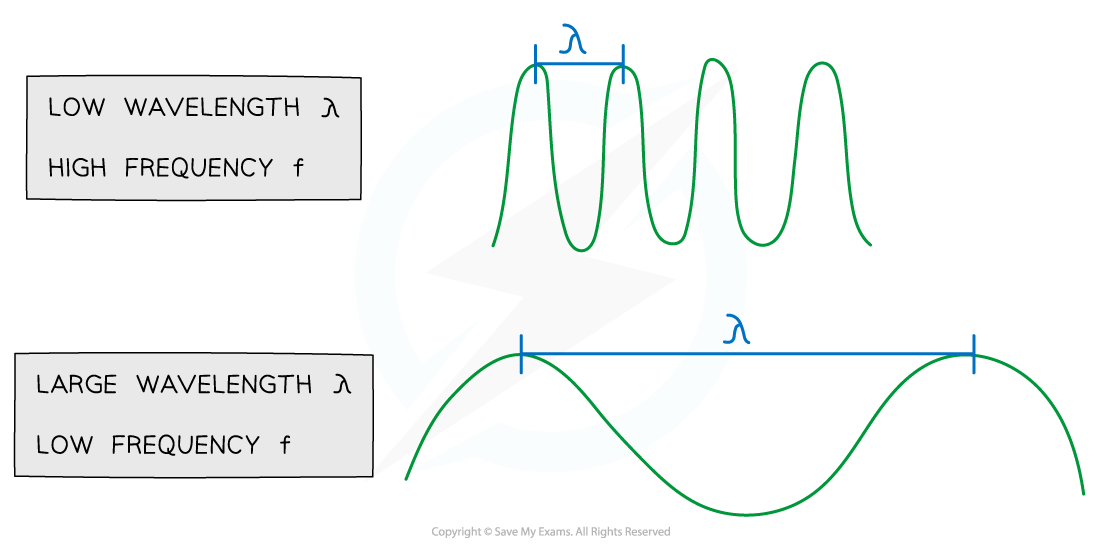The Wave Equation (Edexcel International A Level (IAL) Physics) : Revision Note
The Wave Equation
The Wave Equation
This equation links wave speed, frequency and wavelength

Where:
v = velocity of the wave (m s–1)
f = frequency of the wave (Hz)
λ = wavelength (m)
The wave equation tells us that for a wave of constant speed:
As the wavelength increases, the frequency decreases
As the wavelength decreases, the frequency increases

The relationship between frequency and wavelength of a wave
Worked Example
A travelling wave has a period of 1.0 μs and travels at a velocity of 100 cm s–1. Calculate the wavelength of the wave. Give your answer in metres (m).
Answer:
Step 1: Write down the known quantities
Period, T = 1.0 μs = 1.0 × 10–6 s
Velocity, c = 100 cm s–1 = 1.0 m s–1
Note the conversions:
The period must be converted from microseconds (μs) into seconds (s)
The velocity must be converted from cm s–1 into m s–1
Step 2: Write down the relationship between the frequency f and the period T
f =
Step 3: Substitute the value of the period into the above equation to calculate the frequency
f =
f = 1.0 × 106 Hz
Step 4: Write down the wave equation
c = fλ
Step 5: Rearrange the wave equation to calculate the wavelength λ
λ =
Step 6: Substitute the numbers into the above equation
λ =
λ = 1 × 10–6 m
Examiner Tips and Tricks
This is an important equation that comes up in many other topics. Get really familiar with using it and rearranging it.
Be ready to use prefixes with values, for example, nanometres (nm = m × 10−9) or MHz (MHz = Hz × 106).

You've read 0 of your 5 free revision notes this week
Sign up now. It’s free!
Did this page help you?
